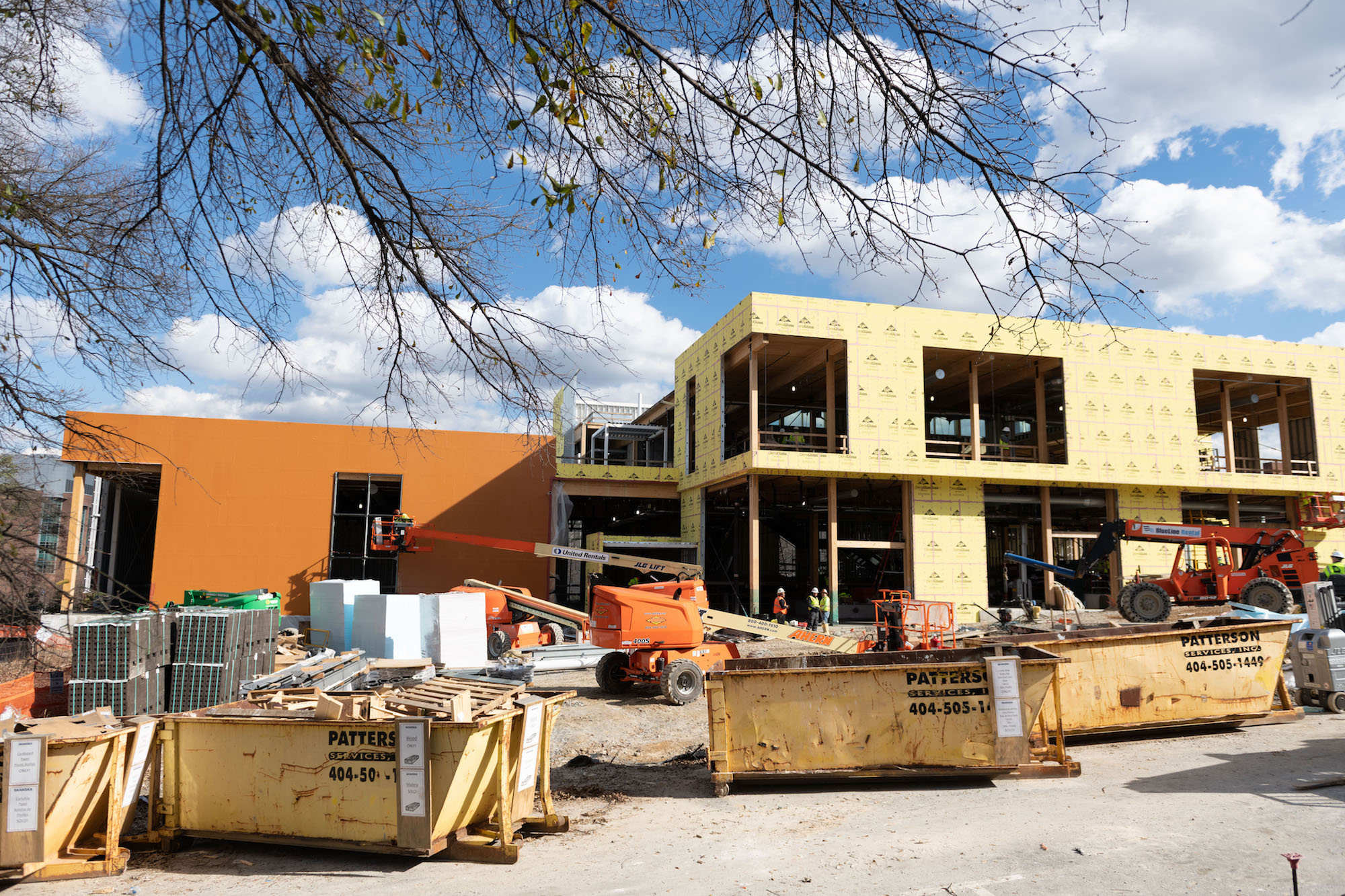
Georgia Tech’s transformation of its physical space helps create healthy spaces that give back to the environment and the campus community.
Later this summer, The Kendeda Building for Innovative Sustainable Design will reach another major milestone – substantial completion – and will begin welcoming the campus community.
Once completed, The Kendeda Building is expected to be one of the most sustainable buildings of its kind in the Southeast. As a building pursuing Living Building Challenge 3.1 status, the main purpose is to go beyond doing less harm and give back to the environment, as well as users and occupants of the building including The Kendeda Building Director, Office of Campus Sustainability, Global Change Program, and the anticipated thousands of yearly students and visitors. From the very beginning, the human element of this unique high-performance building has helped drive the planning and design decisions.
“The human component — and how we interact and actually benefit from the building’s environment — has fortunately become a significant variable in designing buildings,” said Gary Jelin, associate director of Design Services in Facilities Management.
Given that it is estimated that Americans spend approximately 87 percent of their time indoors, how buildings are constructed and the materials used to build and maintain them can have a profound impact on the health and well-being of the occupants.
Living Building Challenge 3.1 certification requires adherence to seven Petals: The Materials Petal has provided one of the greatest challenges for designers and builders. Among other requirements of the Materials Petal such as Net Positive Waste, designers and builders must abide by the Red List, which details a number of materials and chemicals (777 individual chemicals) that should be avoided in the construction of a Living Building Challenge-certified facility. Examples of banned materials include obvious items such as asbestos and arsenic (used for jobs like insulation and pressure treatment of lumber). Other materials like polyvinyl chloride (PVC), used today for plumbing and electrical pipes, are not as obvious. While exceptions are granted based upon market availability, the intent is to promote healthy buildings and surroundings by restricting the use of chemicals and materials that have the potential to be harmful to the environment and to humans.
With The Kendeda Building, planners, designers, and builders have given much care and consideration to following – and, at times, exceeding – the material regulations lordaecksargent.com/blog/a-living-building-project-journey-part-15.
Another intent of the Material Petal is to select materials that are not just “less harmful” to the environment but are regenerative and have the ability to give back to the environment and the occupants. An example of this is using materials, like wood, that have a reduced carbon footprint and are aesthetically appealing to the building’s occupants.
“It’s a completely integrated and healthy approach to designing and constructing high-performance buildings,” said Jelin. “We are learning that you don’t have to sacrifice human well-being for high performance. Actually, the two are quite complementary.”
Access to natural elements, like sunlight and clean air, matters too when it comes to improving the human experience. Since the 1990s, researchers have been drawing correlations between access to natural light and increased test scores in the academic setting. Improving air quality (via natural and mechanical ventilation) is also associated with increases in occupant productivity — not to mention a decrease in sick building syndrome or the range of nonspecific acute illnesses and/or discomfort linked to time spent in a building.
Jelin added that designing for both building and human performance just makes common sense and is a principle that is practiced in many of Georgia Tech’s renovation and new construction projects, not just The Kendeda Building.
For instance, the new facility for the Georgia Tech Police Department, which is expected to open later this spring, is also being constructed to positively impact human health and well-being. During the design phase, the project team incorporated features such as air, water, light, fitness, comfort, and mental well-being into the design of the building. Designers also took the time to ensure the building’s interior design and construction were conducive to creating a healthy and inviting space. For example, the lobby area will be filled with natural light and will include an area to feature community art. To help meet very high indoor air quality standards, the furniture finishes will meet low- and no-VOC (volatile organic compounds) requirements more stringent than previous Leadership in Energy and Environmental Design (LEED) certification requirements. The end result? A building that fully functions as a state-of-the-art campus safety facility, and, like The Kendeda Building, gives back to the environment and those who occupy the building.
For more information on The Kendeda Building, visit livingbuilding.gatech.edu and livingbuilding.kendedafund.org. Updates on Georgia Tech’s transformation of campus can be found at news.gatech.edu/2019/02/04/construction-projects-watch-spring.
